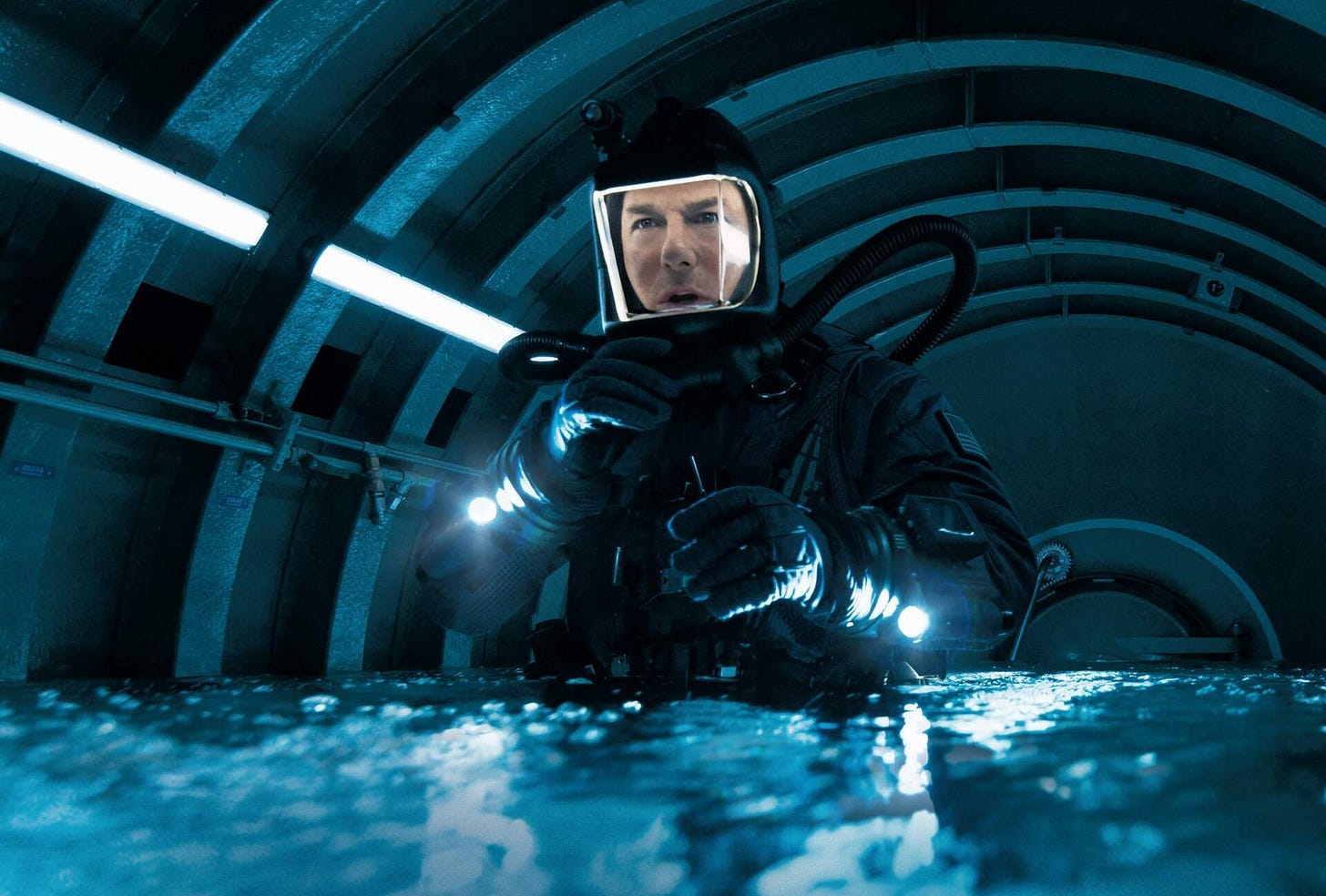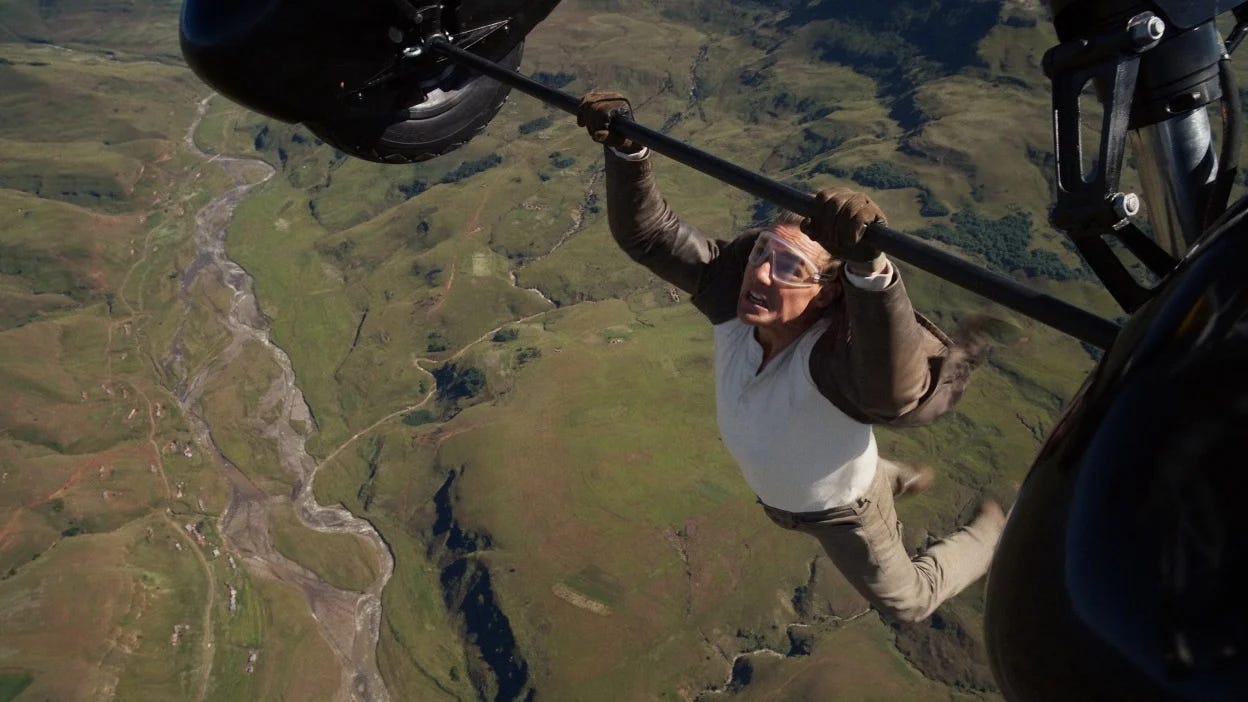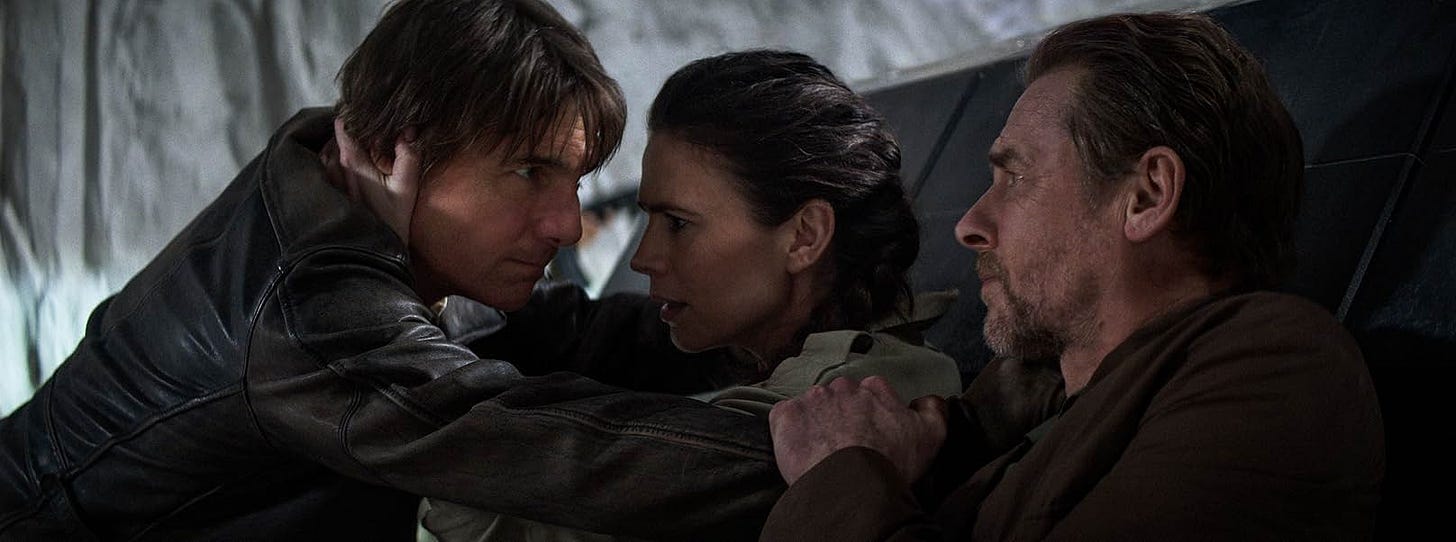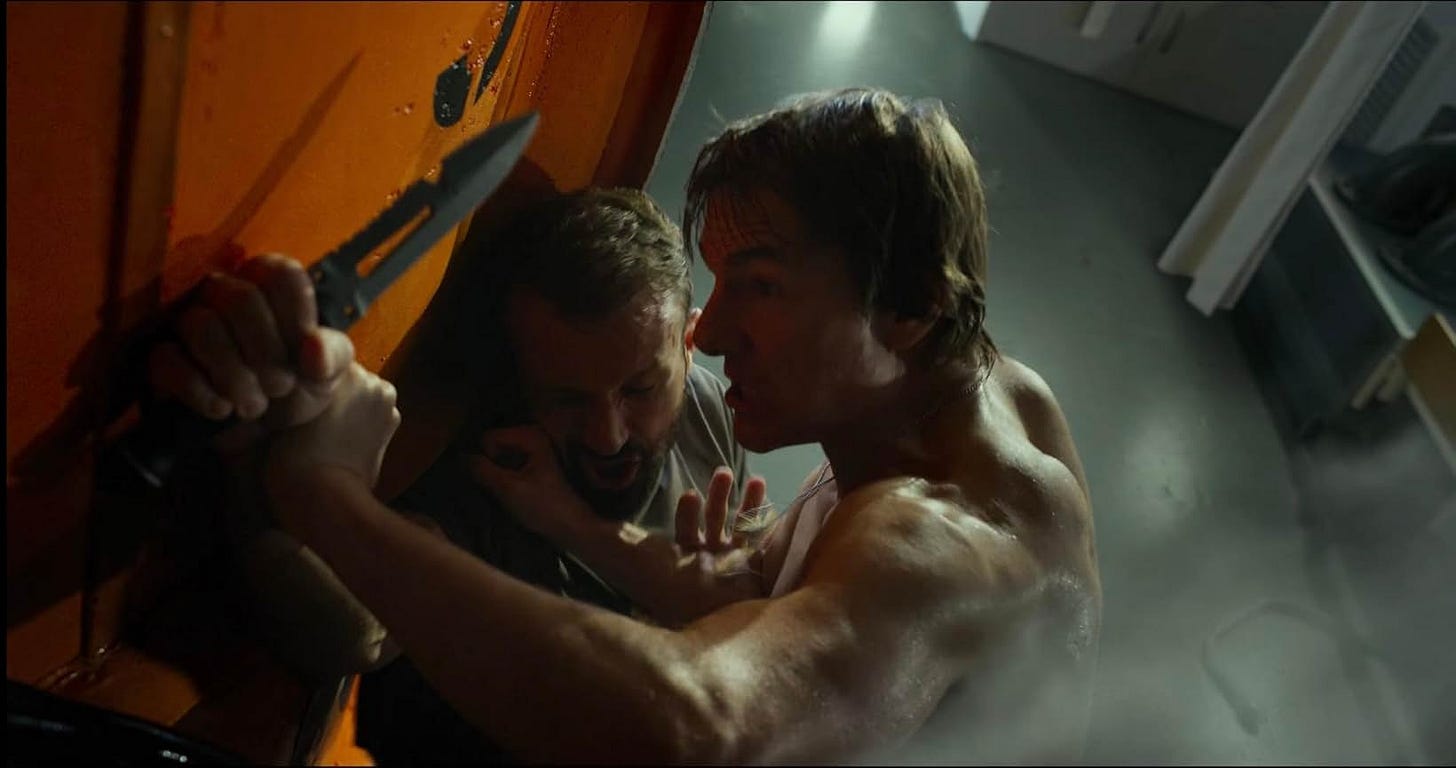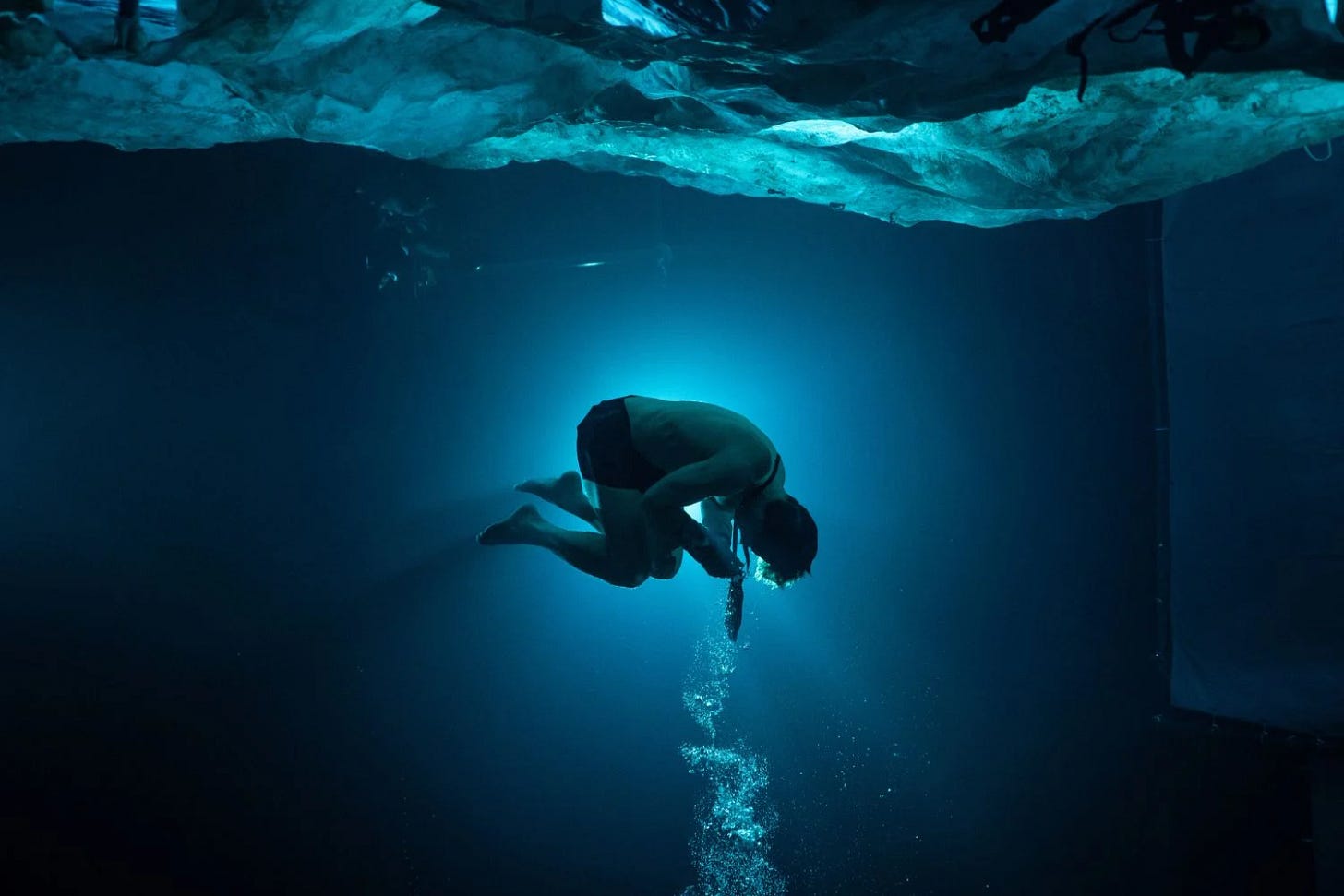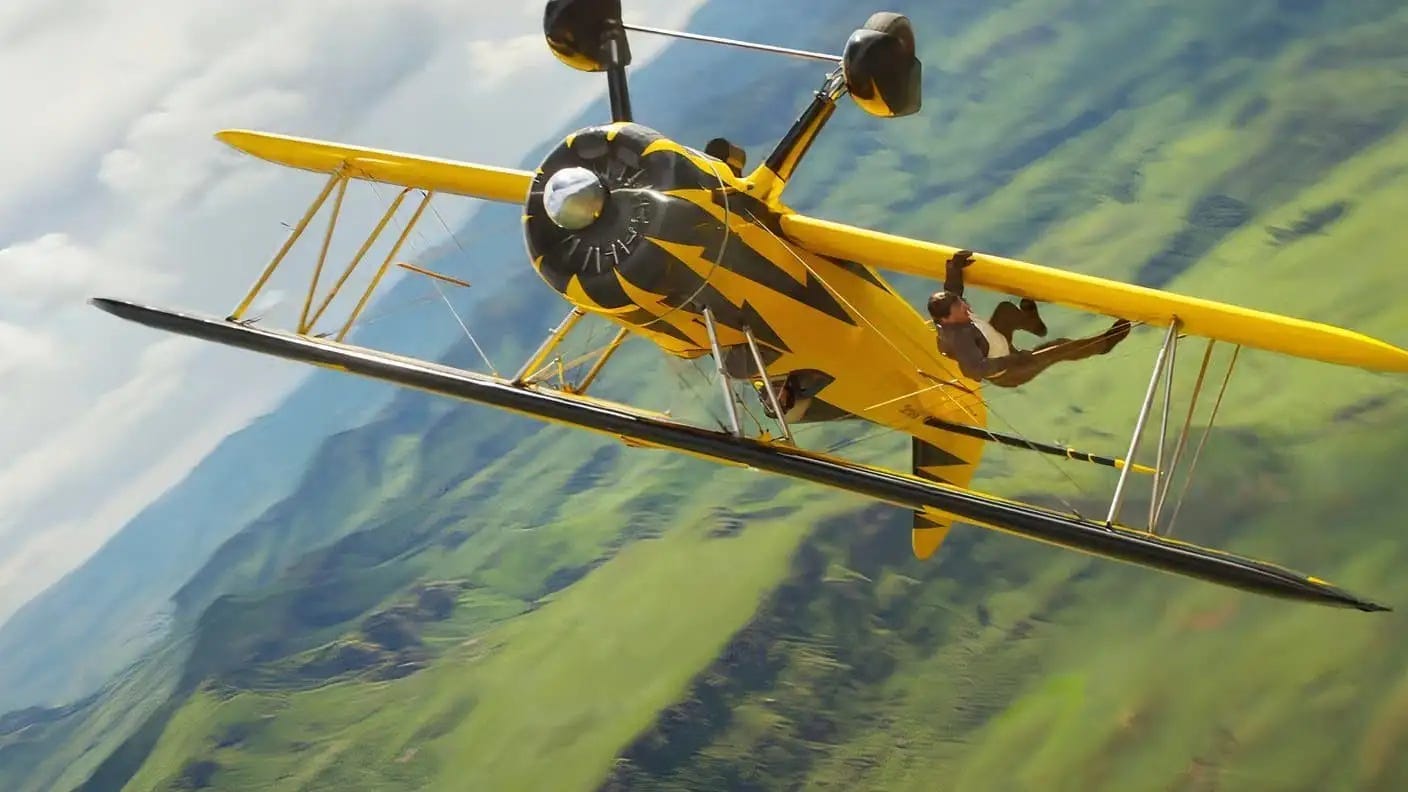Mission: Impossible - The Final Reckoning: Bye-Bye Ethan
I think Cruise has had to clone himself after each one of these
Crazy, middle-aged man from Hollywood assaults two men while hanging off multiple airplanes. The summer season kicks off as the Mission: Impossible franchise sets sail. Shot back-to-back with Dead Reckoning, Final Reckoning endured COVID-19 delays, strikes, and ballooning budgets to satisfy our entertainment. Looking to branch into more auteur-driven cinema, Cruise sees the horizon for his action career despite his protests. Despite costing nearly four hundred million dollars, Final Reckoning has seen a successful domestic pull with the possibility of breaking even. So, does the final installment of the Mission: Impossible franchise send Ethan Hunt off with a bang? Or does the film self-destruct?
What’s it all about?
Following the events of Mission: Impossible - Dead Reckoning, Ethan Hunt (Tom Cruise) has the two keys necessary to destroy an evil, untraceable artificial intelligence known as the Entity. As global systems continue to fall under its influence, nations scramble to control or destroy it, and Ethan is caught in the middle. Now an agent without a country fighting for what’s right, he is ordered to surrender the key to the United States. Instead, he goes AWOL and sets out to destroy the Entity himself, unwilling to let it fall into anyone’s hands. With old allies by his side and new ones stepping in, he races across oceans, small-engine airplanes, and deep beneath the Earth’s surface to stop the Entity before it unleashes irreversible chaos.
Talking Heads
That’s the absolute best I could do plot-wise. As with all Mission: Impossible films, the plot here is largely unintelligible. With every installment, we scratch our heads even further to figure out what the hell any of these characters are saying. But once the mission kicks off, you somehow convince yourself it all makes sense. Final Reckoning is no different, just a little worse than usual. The first fifty minutes of the film are a serious slog to sit through, as the picture burdens us with endless exposition and callbacks. I walked in a little late to my screening, and they were still playing a mixtape of Ethan Hunt’s best moments. Granted, the openings in recent installments have been slower, but despite a nearly forty-minute cold open in the last picture, I could still remember the action being fun. But not a single moment was gripping in the film’s opening. From the get-go, the picture tested my patience.
Still, complaining that a Mission: Impossible movie is too heavy on exposition is like complaining that a sandwich has too much bread. It is what it is. But whether it’s the mind-numbing zigzags, reversals, or sheer incomprehensibility of this installment, director Christopher McQuarrie has to find better ways to liven up these sequences. He tries instilling these duller moments with crosscutting and greater kinetic motion, but, after a while, it gets overly predictable. Inevitably, these scenes don’t matter once Tom Cruise and company put it into action. So, I allowed my mind to drift when the cast gathers around to gawk at Ethan’s crazy shenanigans. That’s the beauty of these Mission: Impossible films. They don’t take themselves seriously enough for the plot to make sense. God forbid someone tried to follow the plot of Brian De Palma’s original. Their head will spin. But typically, the films are told at breakneck speed, so you can’t catch the plot holes. Here, though, the movie gets so ambitious and tangled that it needs to explain everything up front just to keep us on board. Maybe McQuarrie and company could have trimmed the plot or bypassed it more cleverly. But their focus on ending the series “right” seems to override some of what made these films so enjoyable in the first place.
It’s about family (wait, wrong franchise)
Here’s the thing about Mission: Impossible movies. We don’t care about the characters. Each picture is an isolated joy ride. Nothing more, nothing less. Ever since Abrams put his hands on the franchise, there’ve been attempts to sentimentalize and sappify a series founded on escapism. It’s been less so since the third installment, but we’re still treated to occasional references to Ethan’s romantic history and Ving Rhames reminding us, “we’re the sum of our parts”. Even if we’ve known these characters for thirty years, it doesn’t mean we’re attached to them. These have never been character pieces, so any emotional arcs just feel like dead weight. Unfortunately, Final Reckoning has far too many of these sappy and sentimental moments. To me, Brian De Palma was the only director who actually understood the pulse of the franchise: high-octane tension, grand set pieces, and sex appeal. I watch Mission: Impossible films for the same reason I tune into Bond films. I want to visit new locales, meet beautiful women, and punch some bad guys. Every film since has loosely borrowed these elements from the original, but they have slowly been watered down. So when this film veers into the business of conjuring up a tear or a lump in your throat, it loses its way. We don’t need to feel for Ethan Hunt or anyone else. We need them to perform. Thankfully, they still do.
Returning to Roots
I absolutely adored Dead Reckoning. It had a villain that was equal parts mystifying and dangerous. The stakes were high, and the action was wall-to-wall. The trailer still gives me chills to this day. But as with most two-parters, the second installment has to be the responsible one and find closure. While the aforementioned pacing lag hurt the overall quality, so does the big bad. While the Entity was unpredictable and scary in the last installment, here, it’s just so-so. The biggest problem is that we don’t see the global influence of the A.I being spread throughout the world beyond cheap dialogue like, “it wants us divided”. It becomes pretty vague and boring, and the filmmakers seemed privy to it. Instead of seizing the opportunity to connect the villain to our current techno-fears, the filmmakers pivoted to a straightforward Cold War plot. And, don’t get me started on the technical mumbo jumbo these characters utter. I mean, even for this series’ standards, it’s ridiculous. While a race against time to stop nuclear fallout is always thrilling—and a nice nod to the original 1960s television series—it’s a setup that’s been played out. Overall, I wish the filmmakers devoted more time to perfecting the film itself instead of finding ways to make Ethan’s sendoff as “important” as can be. This is the first time any of the films ever directly connected, and it comes off worse for it.
Planes, Trains, and Submarines
But what do we come to watch the Mission: Impossible movies for: the set pieces. And I’m glad to report that almost every flaw in this movie can be forgiven by these sequences. I admit my bias is showing because I love these films. After all, deep down, this is a Brian De Palma series, no matter what anyone says. We endure through the sap and exposition to savor the beautiful action. This film can be split into three main sequences: Russian Invasion, Submarine, and Biplanes. The latter two have been the most talked about, and they’re both a real doozy. They take the very basic tenets of tension and, as always, amplify them on the biggest stage. There’s an objective. Clearly defined stakes. Multiple obstacles. A time component. And something that goes wrong. Each one of these sequences is a masterclass in editing and direction. It’s pure visual storytelling at its finest. That’s why I can’t be bothered with the various sentimental tracks or endless exposition, because it all boils down to one question: will Tom Cruise survive this stunt? We don’t care about Ethan Hunt, we care about Tom. I knew he was in Dallas the day before, but, sitting in the theater, I wasn’t sure he was going to make it out of this one. Tom Cruise hanging off multiple biplanes and acting out a story in the process layers the tension tenfold. My palms were genuinely sweating. And any film that can do that is a winner in my book. Regardless, seeing real fear in the man’s eyes as he holds on for dear life is a level of commitment we’ll never see put on the big screen ever again.
Killer Instinct
At this point, Cruise belongs in the class of Harold Lloyd and Buster Keaton in terms of dedication to the physical act of performing. Ten years ago, we were collectively oohing and ah-ing at when Tom Cruise hung off a military aircraft. Now he’s riding motorcycles off cliffs and leaping between aircraft midair. I mean, what? The reason critics can ignore the series’ many shortcomings is the sheer commitment of its lead. The lengths Cruise will go to entertain the audience are second to none. And even the lowest of the masses can respond to that energy. This is a man who’s never satisfied and never succumbs to laziness. Always looking to top whatever he did last. We talk about killer instinct often in the business world or on the court, but rarely in the arts. Yet, I can definitively say Cruise is the Kobe of Hollywood. Even if his face shows real age, his spirit doesn’t. Cruise is one of one. While Final Reckoning may not entirely work as its own entity (see what I did there). It delivers almost everything we expect and more. As the sun sets on one of my favorite franchises, let’s hope there’s a new generation of filmmakers who treat cinema with the same devotion Tom does.





